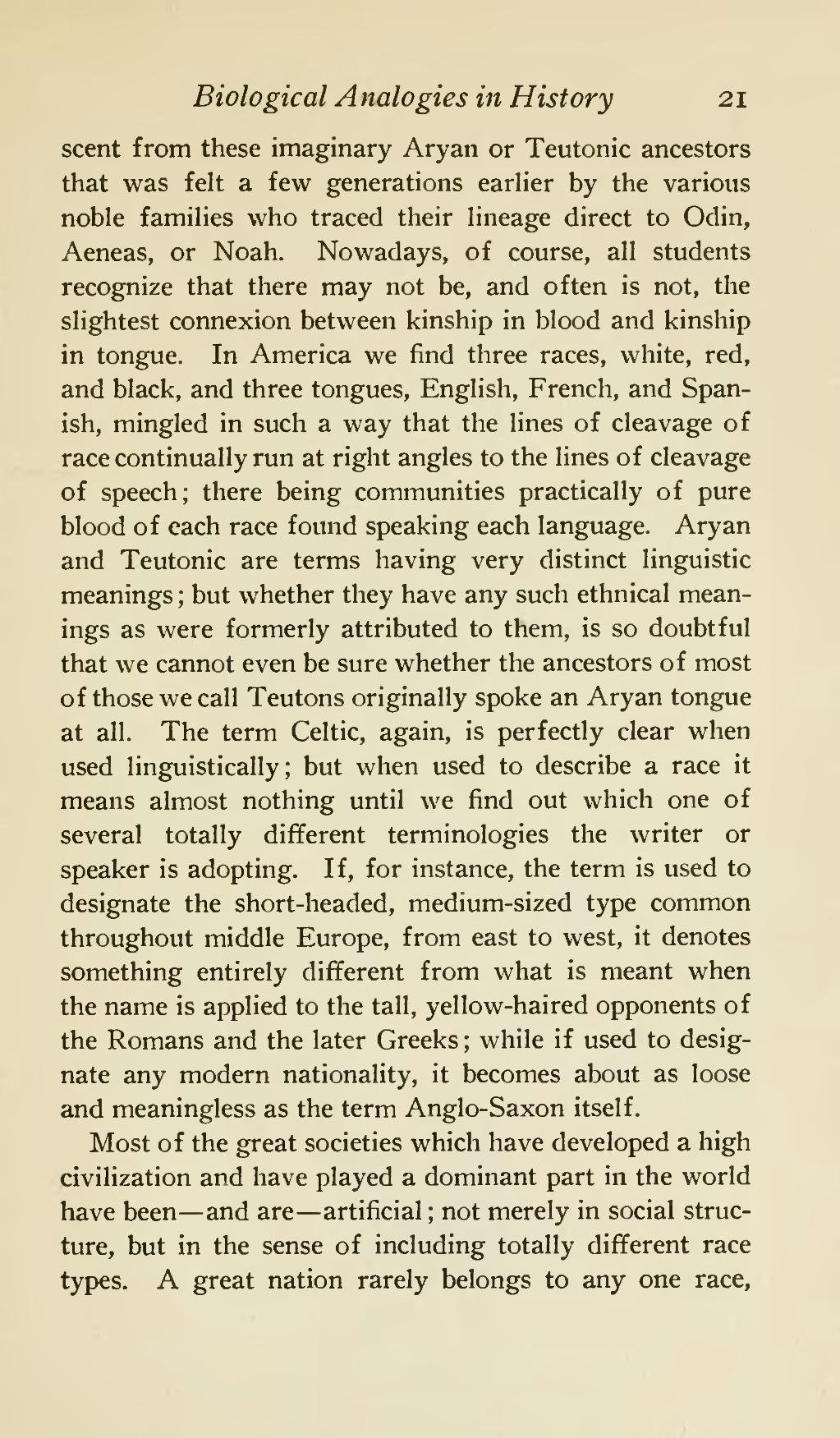scent from these imaginary Aryan or Teutonic ancestors that was felt a few generations earlier by the various noble families who traced their lineage direct to Odin, Aeneas, or Noah. Nowadays, of course, all students recognize that there may not be, and often is not, the slightest connexion between kinship in blood and kinship in tongue. In America we find three races, white, red, and black, and three tongues, English, French, and Spanish, mingled in such a way that the lines of cleavage of race continually run at right angles to the lines of cleavage of speech; there being communities practically of pure blood of each race found speaking each language. Aryan and Teutonic are terms having very distinct linguistic meanings; but whether they have any such ethnical meanings as were formerly attributed to them, is so doubtful that we cannot even be sure whether the ancestors of most of those we call Teutons originally spoke an Aryan tongue at all. The term Celtic, again, is perfectly clear when used linguistically; but when used to describe a race it means almost nothing until we find out which one of several totally different terminologies the writer or speaker is adopting. If, for instance, the term is used to designate the short-headed, medium-sized type common throughout middle Europe, from east to west, it denotes something entirely different from what is meant when the name is applied to the tall, yellow-haired opponents of the Romans and the later Greeks; while if used to designate any modern nationality, it becomes about as loose and meaningless as the term Anglo-Saxon itself.
Most of the great societies which have developed a high civilization and have played a dominant part in the world have been—and are—artificial; not merely in social structure, but in the sense of including totally different race types. A great nation rarely belongs to any one race,
